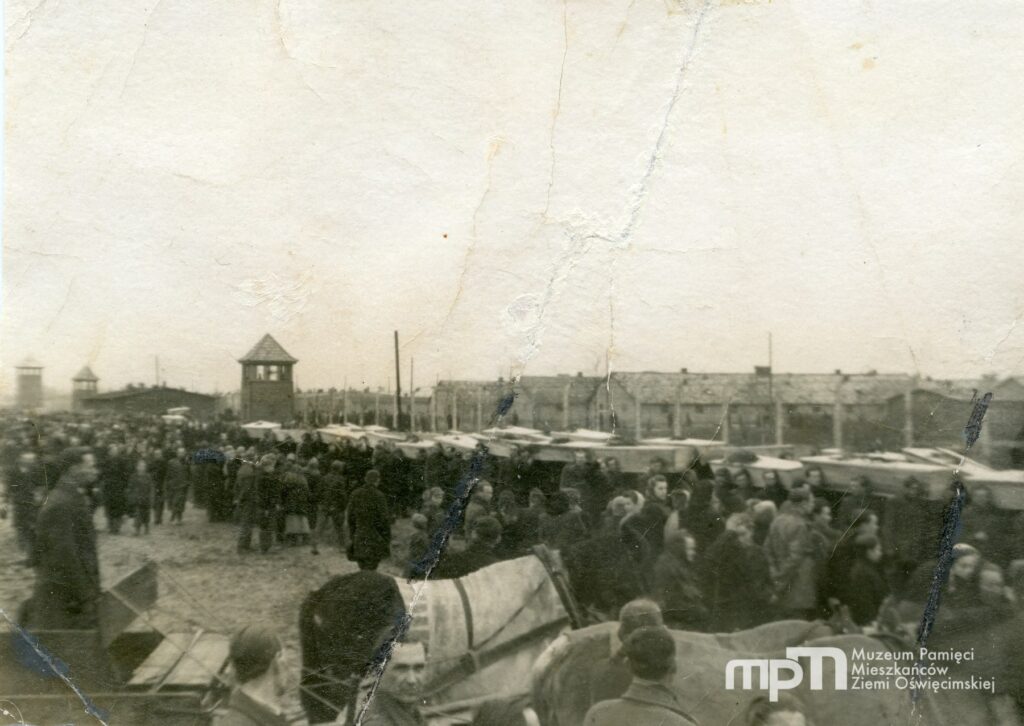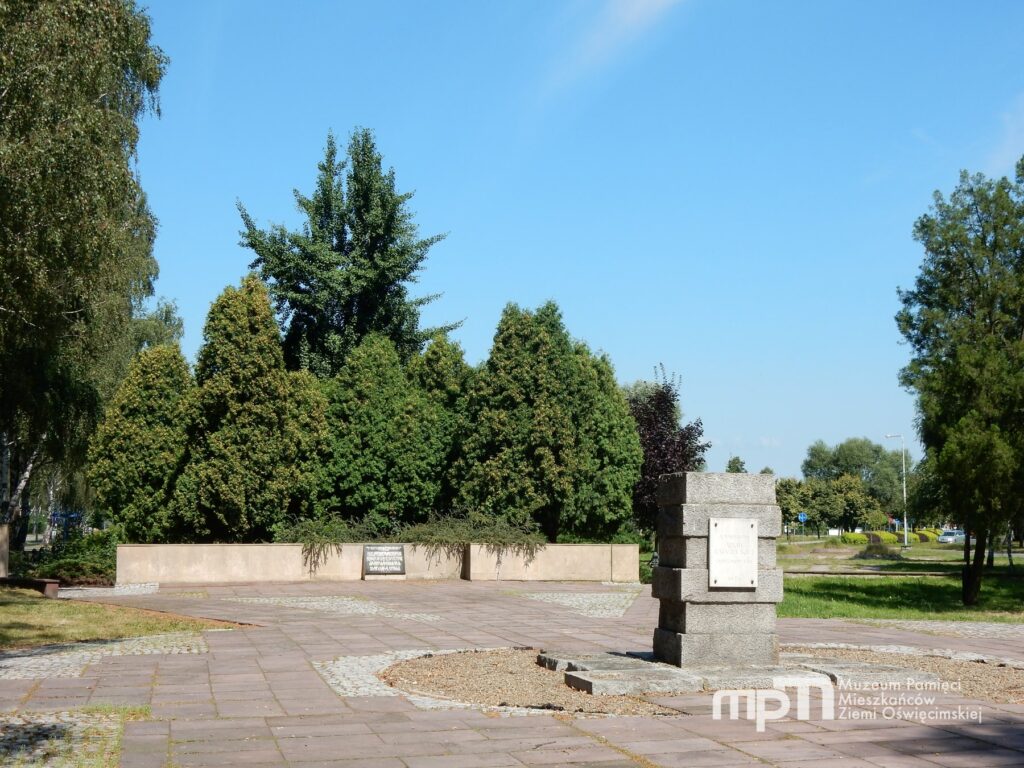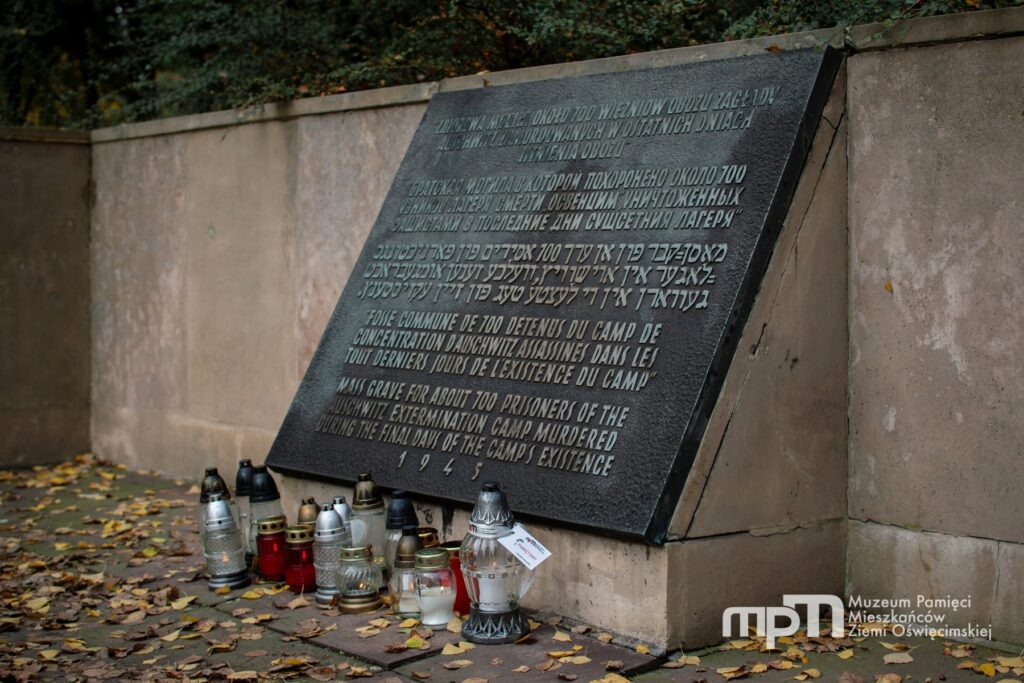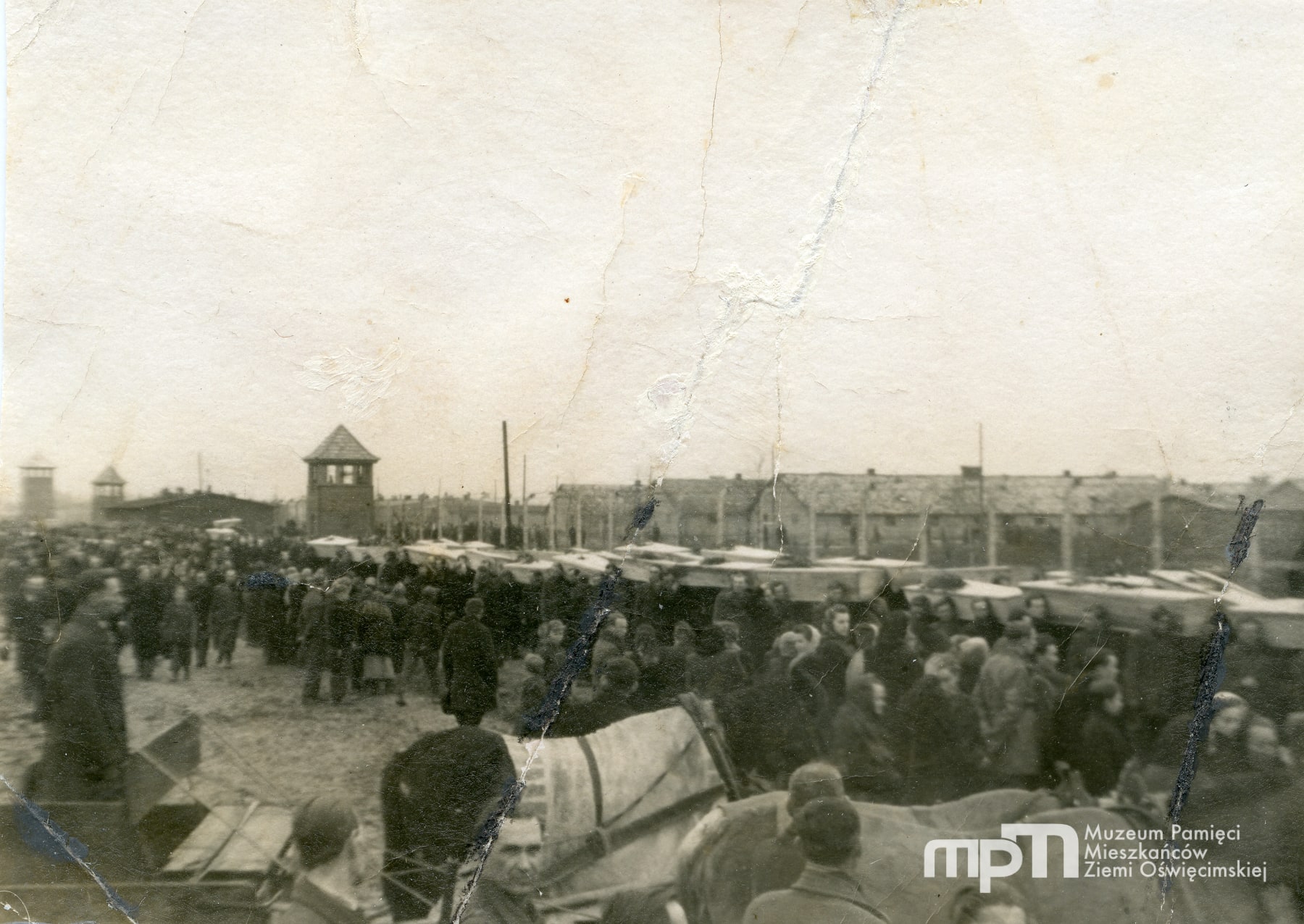On 27 January 1945, Red Army soldiers opened the gates of Auschwitz. They saw the emaciated prisoners who had not been led out by the Germans in the Death March. Then they saw hundreds of bodies behind the wires. These were people murdered by the SS in the last days of the death factory.
A month later, on 28 February 1945, thousands of Oświęcim residents and inhabitants of neighbouring towns took part in the ceremonial funeral of the victims. The funeral procession with coffins passed from the former Birkenau Extermination Camp to the vicinity of the Auschwitz Main Camp.
In October 2021, Zofia Cynarska (née Nosal) recalled the day of the burial in an account for The Remembrance Museum of Land of Oświęcim Residents. On 28 February 1945, she was a girl of less than 12 years. Her mother had a garden and was a florist.
“Our school was told that there would be a funeral for people who had been killed by the Germans and our school went to the funeral. My mother made a beautiful wreath of tea roses. She gave me this wreath and said, May the petals of these roses carry their souls to heaven,” Zofia Cynarska recounted. She also remembered how they came to the site before the funeral procession from Birkenau got there, that there were Russians and a huge pit and coffins lying on the ground.
The prisoners’ mass grave is located at the junction of Auschwitz Prisoners and Obozowa Street in Oświęcim, near the Auschwitz-Birkenau Museum Visitor Service Centre. It does not stand out in any special way that would attract passerbys’ attention. Only on the memorial plaque next to the burial site is an inscription (in five languages) attesting to what a special place we are in. It reads as follows: “Collective grave of about 700 prisoners of the Auschwitz extermination camp, murdered in the last days of the camp 1945”.
“There are no visitors or managers. However, it is about a five-minute walk from the ticket office at Auschwitz, so I highly recommend it. A small place, but a great place to pray for the victims, away from the hustle and bustle,” was one comment posted on a popular website. In another comment, the author wrote: “Discovered somewhat by accident, the dead buried here deserve the same respect as the dead of Auschwitz I, II and III. Never forget!”
Since 2015, International Holocaust Remembrance Day has been observed on 27 January by decision of the UN General Assembly.









